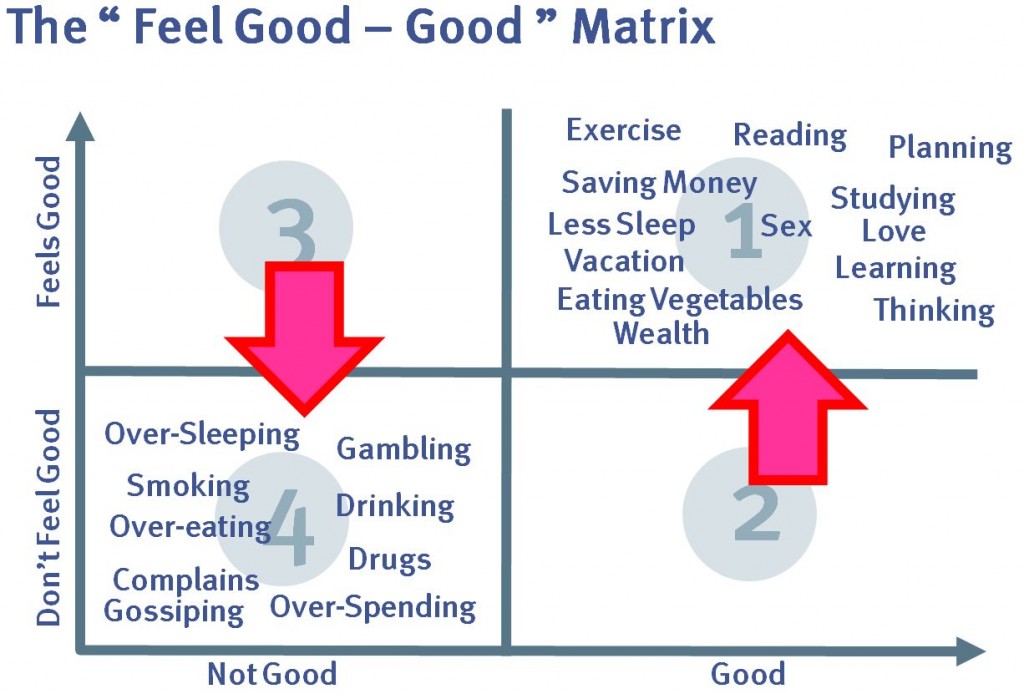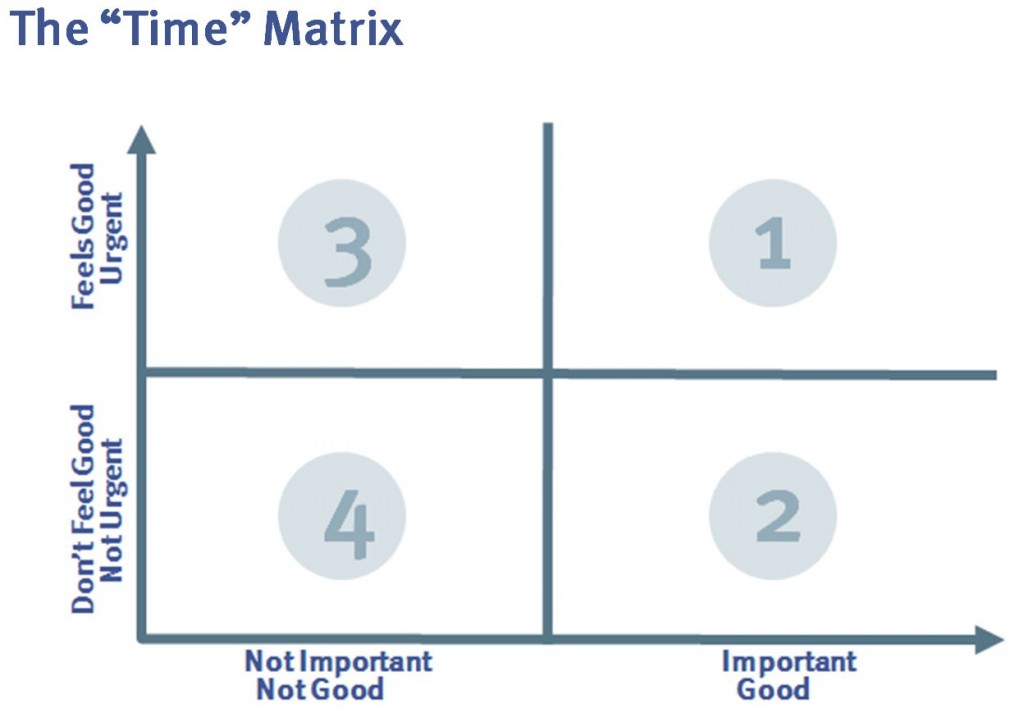The last time around, in Time Management – Part 1, we looked at the Urgent-Important matrix from the Seven Habits of Highly Effective People by Dr Stephen Covey.
This time around, let’s look at the “Feel Good-Is Good Matrix” and see how it can help us with time management. The “Feel good-Is Good” looks like the one below. When we look at all the things we do in life, we can list them in one of the 4 quadrants. How you fill it up depends on the person in question as different things feels good to different people. For example, one person may say that Smoking feels good but one may not. I have filled up some of the quadrants as an example.
So, how does this matrix work? While we may argue whether an activity feels good or does not feels good, most of us should be quite sure of whether the activity is good for us or not. For example, while it is arguable as to whether drinking or smoking feels good, we all know for sure they are both bad for us.
The key to this matrix is to recognize two things :
- People will always gravitate towards the things that make them feel good, regardless of whether they are good for them or not.
- Activities that “feels good” can be made to “feel bad” just by adapting our taste and vice versa.
Therein likes the “trick” to making this matrix work for you. Knowing that we will always gravitate to things that makes us feel good, our job is to change our taste so that things that are good for us begin to feel good while things that are bad for us begin to feel bad.
Focusing on quadrant 2, many activities does not feel good initially but as we do it and it becomes a habit, it starts to feel so good, soon you are not able to do without it. Take for example, Exercise, or Waking up Early. We all know these are good for us but they do not feel good initially. Most of us would rather lie on the couch and watch TV than get up and go for a jog. However, if you keep exercising, very soon, it will feel so good, you’d rather be exercising than watching tv. Similarly, if we start waking up early long enough, we will never want to wake up late again, because nothing feels better than waking up early and breathing in the fresh air.
The worrying thing here is that if you do the wrong thing, this matrix can harm you. For example, nobody smokes a cigarette the first time or drink a beer the first time and say, “Man, this taste great!” Most will choke at the first puff and wince at the first taste of bitter beer. But if we do it often enough, both activity starts to feel good, even though we now they are bad for us… and we keep doing them.
Besides moving activities from quadrant 2 to quadrant 1, it is also important to move activities from quadrant 3 to quadrant 4. For example, although most of us feels good about gossiping, we know it is often bad for us and others. If we stop ourselves from doing it often enough, it will feel bad and we will stop doing it. This is equivalent to moving the activity from quadrant 3 to quadrant 4.
So what you can see, the “Feel Good-Is Good” matrix above is that just like the “Urgent-Important” Matrix we saw in Part 1. If you put the two matrix on top of each other, they look like the above. The key is to focus on the activities in quadrant 2 and make that the main focus inyour life. Similarly, we should avoid the items in quadrant 3 and 4. We may still do some of the activities in quadrant 3 as they often “feel good” or are “urgent” but we definitely should avoid everything in quadrant 4.
So there you have it… time management in a nutshell. Practice using the two matrix and you will see what a difference it can make to your life.





sigh… smoking oscillates between zone 3 and 4… It is not good for me, but at times, it felt good and at times, it felt really, really terrible…
Who is the author of the feel good-good matrix?